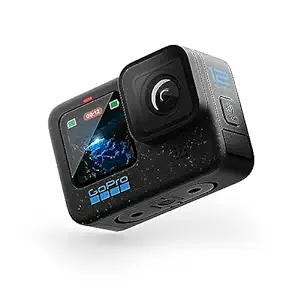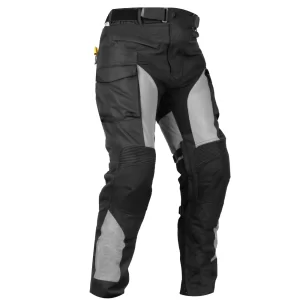Subscribe my Newsletter for new blog posts & tips. Let's stay updated!
Incredible INDIA!
India’s like a whole world in one place. This beautiful nation offers a crazy mix of incredible experiences, from the majestic Himalayas to the sun-kissed beaches of Goa. This blog is your compass, guiding you through the bustling markets, serene temples, offbeat destinations, and breathtaking landscapes. This blog delves beyond the typical tourist trail, finding hidden gems and giving you the real scoop to make your travels awesome. India’s captivating blend of traditions, spiritual depth, festive spirit, architectural wonders, and natural beauty will create memories that resonate strongly, a warm and persistent glow that stays with you well beyond your visit. Whether you’re an adventure seeker, a cultural explorer, or simply a taste of tranquillity, this blog showcases the incredible diversity, history, and soul of India.
Things to Know
India is a vast country with great variety in many aspects: its food, its people, its geography, and even its languages. India is one of the most famous destinations in Asia. It has something for everyone – backpackers, couples, solo travellers, luxury travellers, etc. With amazing temples, humbling religious places, and a wealth of diverse and charismatic people, India is one of those places you truly must visit.
The official names of India is “Republic of India” or “Bharat Ganrajya”. Indians also commonly refer to the country as “Hindustan”. India is made up of 28 states and 8 union territories. The capital of India is New Delhi.
Language: India has two official languages (Hindi and English) and 22 Scheduled Languages. India has many other languages spoken, including 1652 languages in addition to the 122 major languages.
People: Indians are renowned for their warm hospitality. They’re so welcoming and love to connect with travelers. They will make you feel at home, with smiles, helpful advice, and invitations for a meal or tea.
Currency: INR (Indian Rupees)
Internet connectivity: Very good
Electricity socket: 230 Volts AC electricity. Power sockets are two and three-pin round plugs (type C, D, or M). If you’re from Europe, you shouldn’t need an adaptor, but Americans will. To avoid the hassle, I recommend picking up a Universal Travel Adaptor before you leave.
Festivals & Celebrations: India is a land of vibrant festivals. India knows how to celebrate! Every festival is a whole new experience with its own unique traditions. Some of the most popular festivals include: Diwali (festival of lights), Holi (festival of colours), Durga Puja, Christmas, Eid al-Fitr, Dussehra, Onam, Baisakhi, Pongal, Vasant Panchami, Ganesh Chaturthi, Ziro Music Festival, Hornbill Festival and many more. These celebrations are more than just events; they are expressions of faith, community, and the enduring human spirit. Click here to learn more about Indian festivals.
Money and Cost
India is a very affordable place to visit. The cost of travelling in India may vary depending on your travel style, duration of your stay, and comfort preferences. This blog provides you helpful tips on budgeting, accommodation, transportation, and local experiences to help you plan a memorable and affordable journey.
Accommodation
- Budget: 400 INR to 1000 INR ($5 to $12) per night
- Mid-range: 1000 INR to 5000 INR ($12 to $60) per night
- Luxury: 5000 INR + ($60 +) per night
Meal for one
- Budget: 50 INR to 200 INR ($1 to $3)
- Mid-range: 200 INR to 1000 INR ($3 to $12)
- Luxury: 1000 INR + ($12 +)
Transport
Autorickshaw, local taxi, bus, train, metro rail, privet cab, flight, UBER, OLA, Rapido etc. are available.
- Autorickshaw, local bus, local train, metro rail: 20 INR to 200 INR ($0.3 to $3)
- Intercity bus, train: 500 INR to 5000 INR ($6 to $60)
- Privet cab, UBER, OLA: 300 INR to 1000 INR ($5 to $12) per 10Km
- Bike rentals: 500 INR to 3000 INR ($6 to $40) per day
Average daily cost: 2000 INR to 30,000 INR ($25 USD to $400 USD). Click here for more information about the cost of travel in india.
Best Time to Visit
India is a vast country with different climates. The best time to visit a particular location may vary depending on its specific weather patterns. Some festivals, like Holi and Diwali, take place during specific times of the year and can attract large crowds. It’s always a good idea to research the weather and expected crowds for your desired destinations before finalizing your trip.
December to March (Winter): This is generally considered the best time to visit most parts of India. The weather is cool and dry, making it comfortable for sightseeing and outdoor activities. This is also the peak tourist season, so expect higher prices and larger crowds. Ideal for visiting popular destinations like Delhi, Jaipur, Kolkata, Agra, Jammu & Kashmir, Mumbai, Coorg, Ooty, Humpy etc. This is the best time to visit national parks like Ranthambore, Kaziranga, Jim Corbett, Kanha, Bandhavgarh, Gir, Lataguri, Nagarhole etc. places.
April to July (Summer): Temperatures can soar in many parts of India, especially in the north. This is the off-season for many destinations, so you can find lower prices and fewer crowds. Ideal for visiting hill stations like Arunachal Pradesh, Shimla, Manali, Nainital, Leh-Ladakh, Kashmir, Sikkim, Darjeeling, Netarhat, Ooty, Shillong etc. places that offer cooler temperatures.
July to September (Monsoon): This is the monsoon season in most parts of India. While it can be wet and humid, it’s also a beautiful time to witness the lush greenery and waterfalls. This is another off-season, so you can find lower prices and fewer crowds. Ideal for visiting Kerala, Sunderban, Goa, Puducherry etc. places.
Check the best time to visit India.
Visa Requirements
Tourist visas are easy to obtain, either online or through an Indian embassy or consulate. You can apply for an eVisa before travelling to India. Usually, the process is quick and efficient. Costs vary depending on your nationality and the duration of the visa, so check the e-Visa portal for the latest information. Click here to learn more about Indian Visa.
You can apply on different types of visas including multiple entries if needed. You can apply for your visa here.
Safety in India
India offers incredible experiences, but it’s important to be aware of possible safety concerns. These may include petty theft, scams, and the risk of certain health issues. It’s not to scare you, but you should be aware that, things like pickpocketing, bag snatching, and the like are somewhat common in some places in India. Certain parts of India are known to be dangerous, either because of drugs or gangs and heightened crime. India has experienced significant violence from various separatist groups, including Kashmiri insurgents, as well as Marxist groups like the Naxalites. Jammu and Kashmir, as well as some northeastern states, have experienced instances of terrorism and violence. It’s important to be aware of the potential risks and take necessary precautions when travelling to these areas. Follow the advice of local authorities and security personnel. Monitor the local news and be alert for suspicious behaviour.
You’re gonna love India, trust me! but you’ve got to be a bit careful. Travelling safely in India requires research and preparation. Stay informed about local travel advisories and go with reputable tour guides. Taking necessary precautions, such as taking care of your stuff, being aware of where you are, and avoiding isolated areas, especially at night are good practices. Doing that helps you explore this beautiful country. Here are some safety tips for travelling in India.
Historical Overview
India has got a rich and ancient history, you know, going all the way back to the Indus Valley Civilization, which was one of the world’s earliest urban cultures. As centuries passed, numerous empires rose and fell, leaving behind a legacy of art, architecture, and philosophy. From the Mauryan and Gupta empires to the Mughal era, India has witnessed periods of great cultural and intellectual development. After centuries of British colonial rule, India finally became independent in 1947 and then began the process of building a nation and a democracy. Click here to learn more about Indian history.
Pick a Destination in INDIA
-
States
- Andhra Pradesh
- Arunachal Pradesh Popular
- Assam
- Bihar
- Chhattisgarh
- Goa
- Gujarat
- Haryana
- Himachal Pradesh Backpacking
- Jharkhand
- Karnataka Must Visit
- Kerala Must Visit
- Madhya Pradesh
- Maharashtra
- Manipur
- Meghalaya Hidden Gems
- Mizoram
- Nagaland
- Odisha
- Punjab
- Rajasthan
- Sikkim
- Tamil Nadu
- Telangana
- Tripura
- Uttar Pradesh
- Uttarakhand Backpacking
- West Bengal Rich Culture
Travel
Video Gallery
Subscribe Newsletter
- Popular Products
- New Products
- Recently Viewed




















